Low pencil-post bed
Traditional form gets a trim in this update to a classic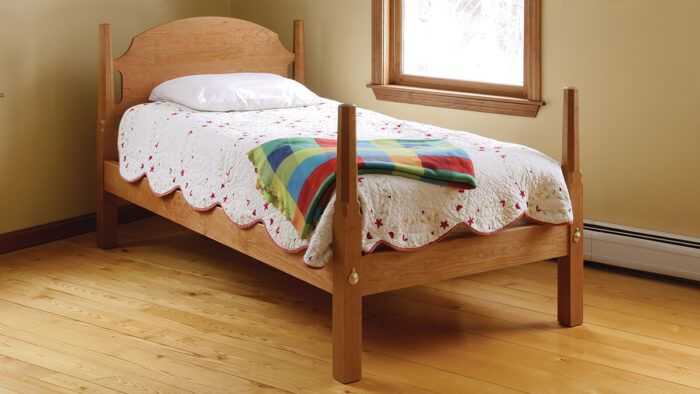
Synopsis: This twin bed is modeled after a traditional pencil-post design, but the size is smaller and the posts are low. That having been said, this bed is full of traditional details. It has the signature octagonal posts, with a lamb’s tongue detail between the tapered upper section and the square lower section. The tops of the posts are domed. And although the posts have most of the pizzazz in this design, the headboard is full of character, too.
I love the simple formality of a tall pencil-post bed. So when thinking about a new low-post design in cherry, I looked to the timeless tapered pencil post for inspiration. Scaling down elements gave me a more casual, sturdier bed perfect for a guest room or a child.
Just because this bed is scaled down doesn’t mean it skimps on the details. It features the signature octagonal posts with sweet lamb’s tongue transitions from the upper tapers to the lower square. Because the tops of the posts are accessible, I dome them to ease their touch. To maintain the historical elegance of the bed’s inspiration, I use slats instead of a box spring, evoking the thinner period mattresses held up only by ropes woven through the bed rails (those ropes were tightened for support, hence the saying “sleep tight”). Full-size plans for this bed are available at my website, epicwoodworking.com. They include drawings for both slats and a box spring.
Eight tapers, one jig
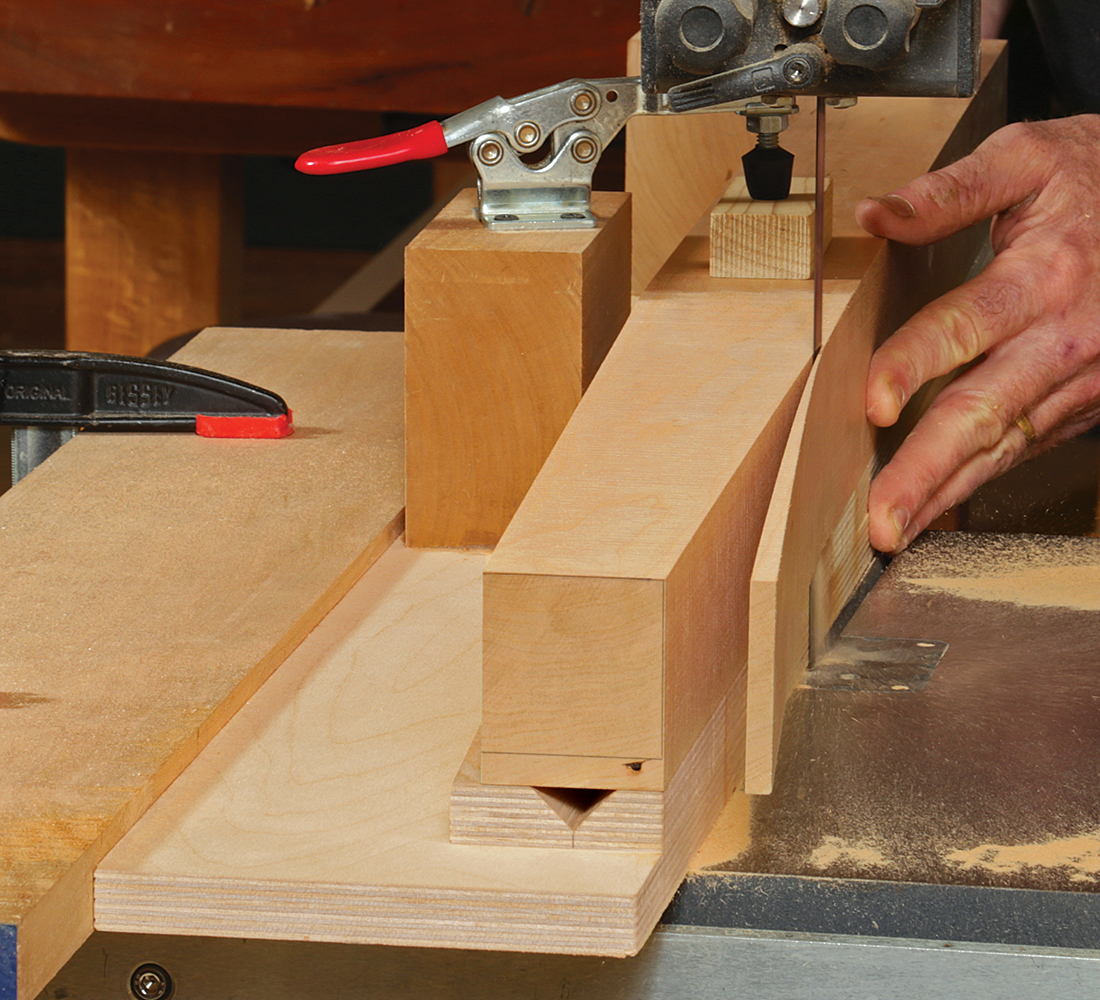
The posts are one of the major design players of the bed, sharing the stage only with the headboard. You’ll add detail to the posts later, but to start you need even tapers. For these, I make a special sled.
This sled, with a base, toggle clamps, and stops, is similar to the one in my article “Leg-Tapering Jig” (FWW #268), but there are two key differences. First, this jig’s for the bandsaw. Second, it has an auxiliary base with a V-groove in it tacked to the main base. The V-base is skewed in relation to the main base at an angle that matches the post’s taper.
The V-groove must be centered in the width of the V-base. To accomplish this, I rip the V-base to the same width as the post stock, tilt my tablesaw blade to 45°, set its height to cut slightly more than halfway through the stock, and make a cut with one edge against the fence. A cut with the other edge against the fence completes the V-groove. To cut the tapers, start with the four primary ones, placing each face of the post in turn flat on the V-base. Then, to cut the octagonal tapers, set the 90 corners of the post in the V-groove. The first four tapers are through-cuts, but the octagonal ones are stopped. For these, back the jig out of the bandsaw and cut the taper waste free with a backsaw. Clean up the bandsaw cuts with a handplane.
Next, carve the lamb’s tongue and dome the tops of the posts. The carving recalls the bed’s traditional roots. The dome is both an aesthetic and tactile addition, considering how low (and touchable) the tops of the posts are.
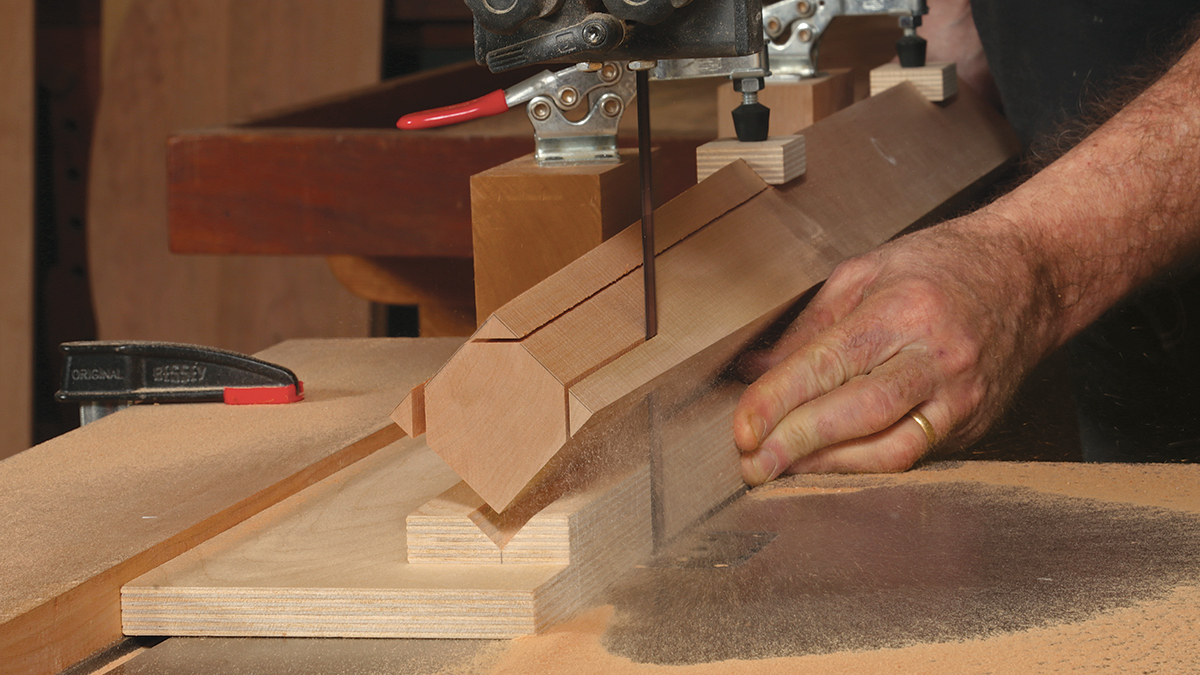
Different mortise-and-tenons
The bed rails use two types of tenons. To make the bed knockdown, the long rails get wide, short tenons that are left dry and bolted in place during assembly. The short rails, which get glued to the posts, have a pair of tenons that are spaced apart to make room for the bolts.
The bed bolts require a stepped hole in the post. I use a Forstner bit to counterbore for the bolt’s head, then follow up with a brad-point bit for the bolt’s shank.
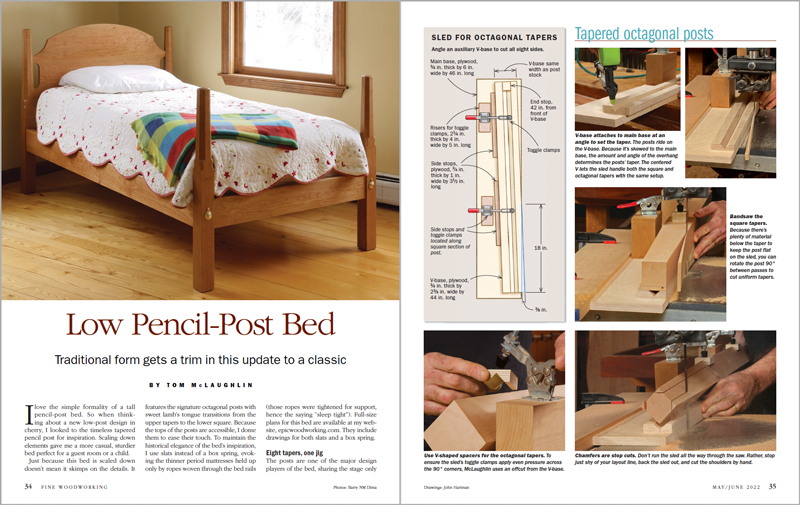
From Fine Woodworking #296
To view the entire article, please click the View PDF button below.
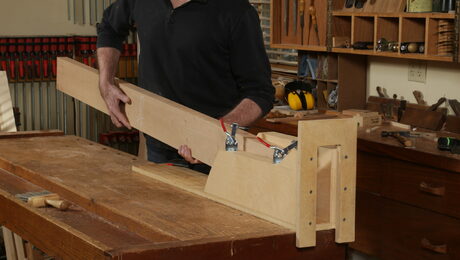 |
How to cut a tenon on a long board with a router jig |
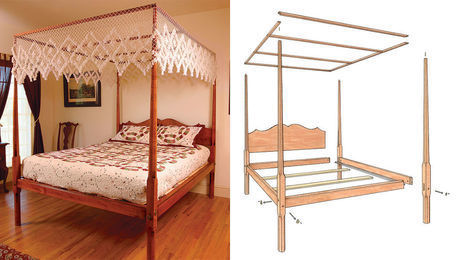 |
Build a Pencil-Post Bed |
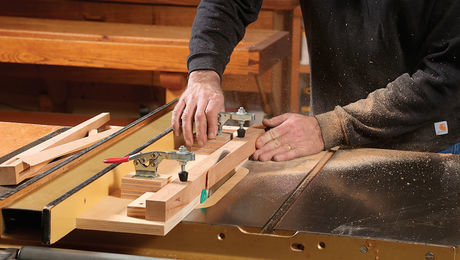 |
How to Make a Simple Leg-Tapering Jig |



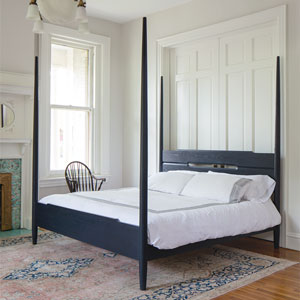
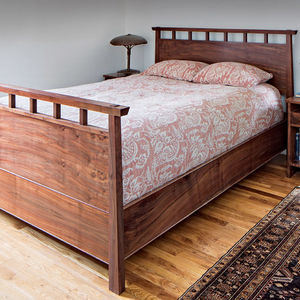
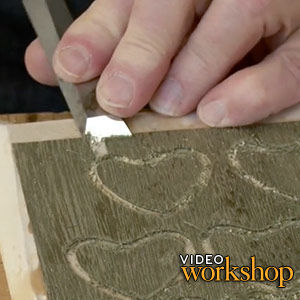
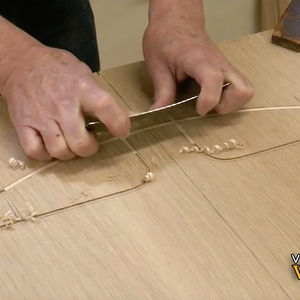




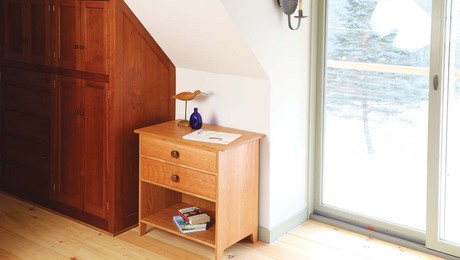
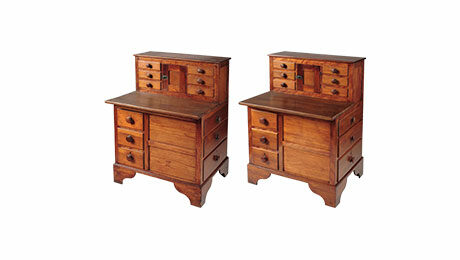
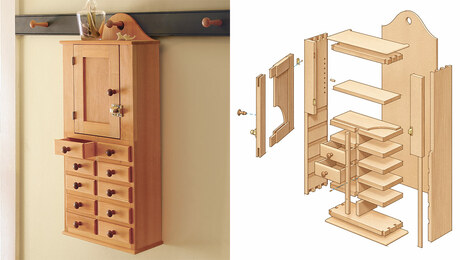








Log in or create an account to post a comment.
Sign up Log in